How To Break Your Technology Addiction

What’s the biggest addiction of the 21st century?
Maybe heroine, cocaine or alcohol?
Well no! I think the biggest 21st century addiction is to technology.
Addictions aren’t just about drugs. They are anything that we persist in doing despite visible negative consequences.
Now I will explain why I think technology classifies.
Why technology is addictive?
If you’re between 18 and 24 the data says that you look at your phone on average 74 times per day. 35% of people admit that their phone is the first thing they think of when they wake up. Only 10% think of their partner!
Take a look at a minute of this video from the documentary Stare Into The Lights My Pretties. I don’t think you can watch that clip and not think we’re all addicted. We’ve been trained in the same way as that rat to constantly seek the dopamine hit of technology.
There’s a technique used in the gambling industry called intermittent variable rewards. If you want to incentivise someone to perform an action you could give them a reward every time they do what you want. But actually a far better strategy is to only give the reward some of the time. The uncertainty of whether you will get the reward is supremely addictive for the human brain.
This exact technique is used by Facebook. When you check, you don’t know whether you will have 0 messages or 5. The brain releases a tonne of dopamine because it doesn’t know what reward it’s going to get. This is crazily addictive.
Why it has serious negative consequences?
I realised my own addiction to technology when I started trying to write every day. I would write a few sentence and then get distracted.
When I tried to focus on what was causing the distraction I nearly always found it was because my mind had developed a habit that whenever it didn’t know what to do it would say “oh you can check technology”. Trying to write is filled with these moments. What should I write next? How should I write that next sentence? Instead of persevering to solve these questions my brain would take the easy route and check technology.
Pretty much all valuable work requires intense focus. To do this deep work you need long periods of undistracted time. If you impulsively check Facebook, WhatsApp or Email then you will be constantly distracted.
Also helpful for doing important work is getting into flow states. These are periods where you’re working on something that’s just at the boundary of your abilities. Time seems to melt away and hours pass without you noticing. Lots of researchers think this is an optimal state for human beings. Getting into flow states is incredibly challenging if you’re always getting notifications or you’re always checking your phone.
Technology has killed bored. It’s killed day dreaming. Solving problems and figuring out what to do with your life often requires a type of thinking called diffuse thinking. This is when your brain connects seemingly disparate ideas in order to solve problems. This is the type of thinking that occurs when your day dreaming. Your brain is just playing around with different ideas. If you’re never bored because you can always find something novel or new online then you’ll never day dream. What’s life without day dreaming!
Our collective technology addiction has also had a bad effect on our interpersonal interactions. How can you be fully “with” someone when you’re constantly thinking about checking your facebook.
Why you can’t just trash your phone?
Sometimes all of these negatives make we want to do this to my phone and laptop.
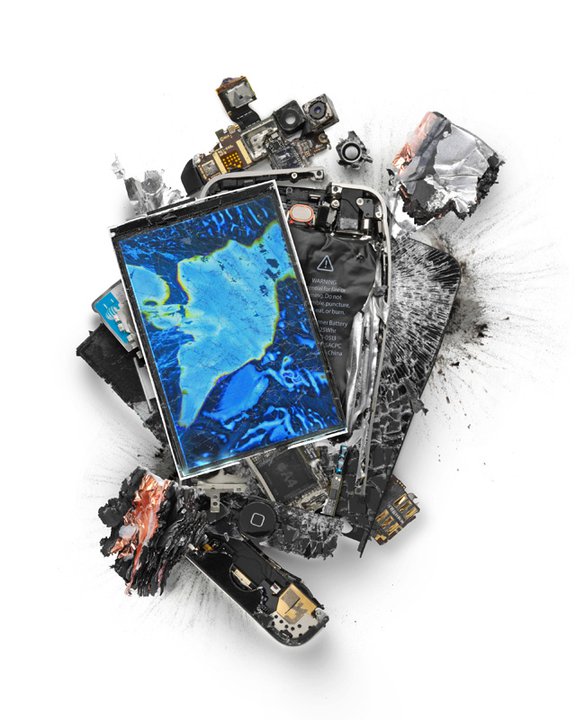
So I can spend all of my time like this gal:

But actually technology still gives a lot of value to my life. I can keep in contact with people from around the world. I can find out about inspiring events near me. I can listen to podcasts that open my eyes to new ideas. I can write, make videos, make music. Be creative.
The key is to figure out how we can make use of all these benefits without technology taking control of our lives.
What I’ve done about it.
I’ve been experimenting with a load of techniques for tackling technology addiction for a while that I want to share with you today. I’ll describe the method and then explain how successful it’s been for me.
1. Eradicating my FB newsfeed
I wanted to be able to use FB for messaging and events but the newsfeed is a crazy, addictive (maybe depressive) time sink so it had to go.
There’s an application called News Feed Eradicator for chrome and another for firefox.
That leaves your FB looking clean and undistracting:
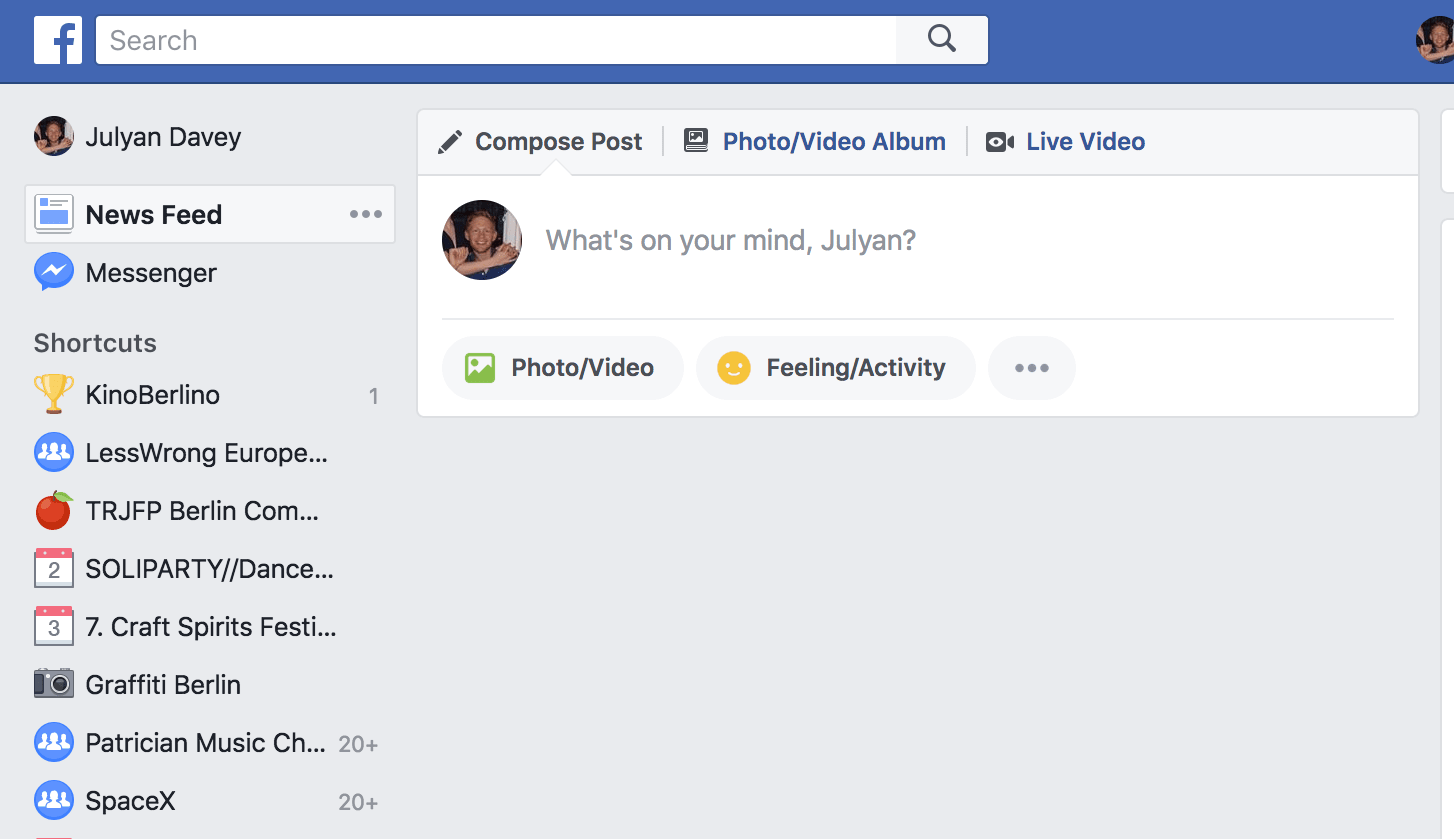
Success: 7 / 10
Don’t spend any time checking my news feed any more! A big win! But this was never really that much of a problem for me.
There’s also a similar extension for youtube. That stops you going on crazy crawls.
2. Greyscale Phone
There’s a lot of research that says that the colourful icons of our phones give our brains shiny rewards every time we unlock.
You can set your phone to greyscale to get around this.
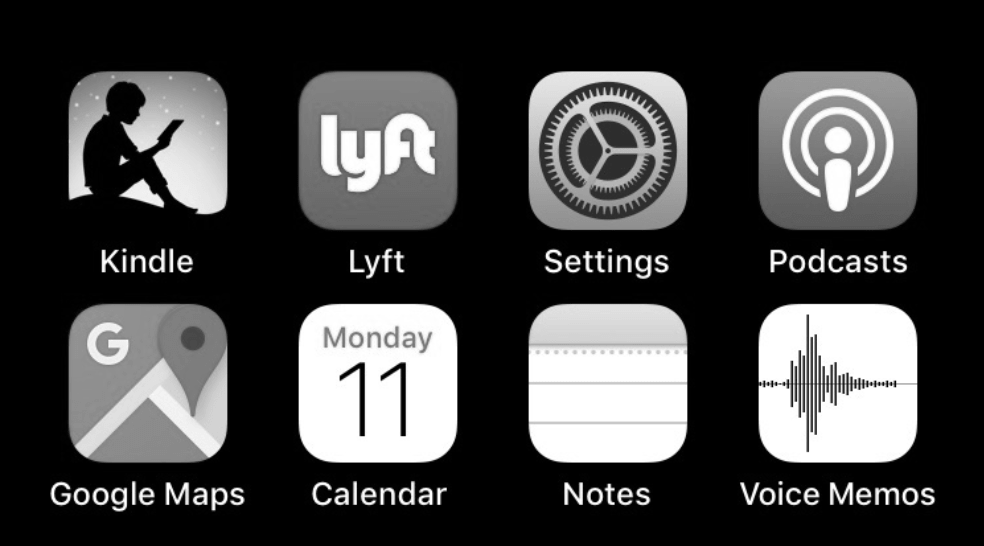
For an iPhone: Go to Settings > General > Accessibility.
For android: Here’s a guide.
Success: 6 / 10
Seemed to be checking my phone a bit less after switching to greyscale but not a massive change.
3. Phone outside bedroom
A big problem for me was checking my phone the minute I got up. It was my alarm. So I would turn off my alarm.. and had then trained myself to check online. And I’d probably spend the next 0-1 hour browsing away.
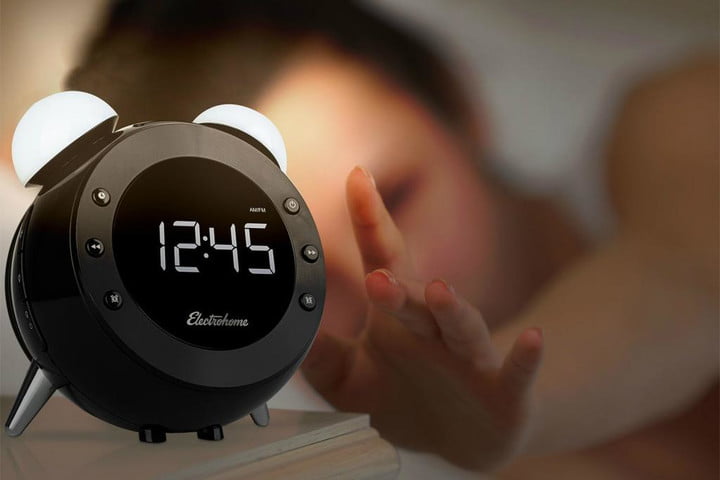
It really primes my day badly if I do this. I’ve started the day thinking about other people’s problems. Rather than what I can contribute to the world.
So get an alarm clock and keep your phone out of the bedroom.
Success: 8 / 10
This simple switch seemed to help everything else for me. If you don’t start the day checking your phone then it has a lot less influence over the rest of your day
4. Morning Deep Work Time
A key thing I was trying to achieve by cutting back on technology was to have more time to engage in deep work.
More time for working on projects that I actually care about rather than mindless browsing.
I decided to create a Morning Deep Work Ritual. By this I mean I decided that until midday I would not use technology for anything BUT deep work.
I wouldn’t check messages. I wouldn’t check the news.
It was kind of hard to maintain the motivation to actually do this.
Until I found Freedom App.
It lets you block sites of your choice on any schedule you like. So I setup it to block all my distracting sites every morning. I even made it impossible to turn off. I had to stick to this.
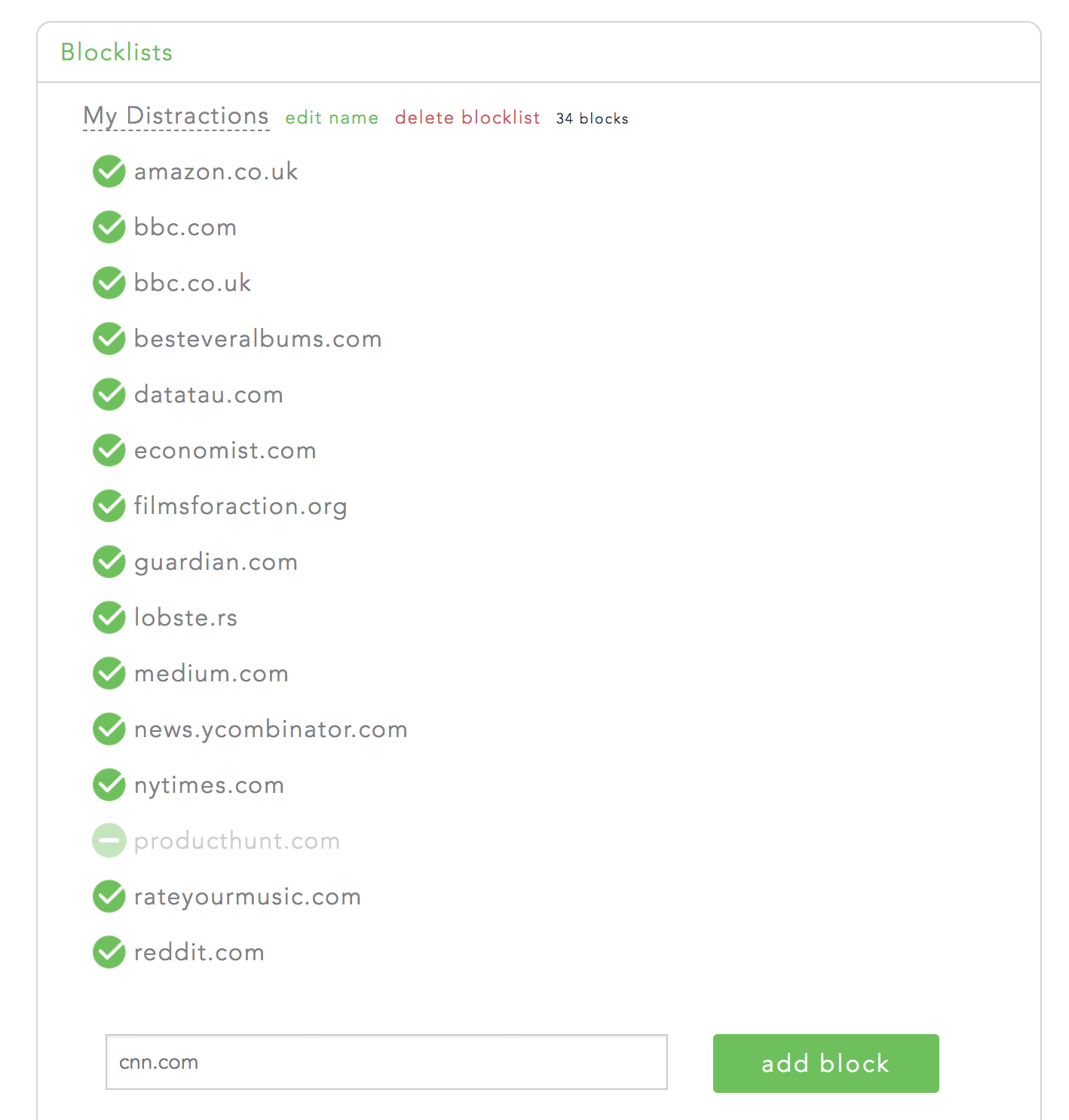
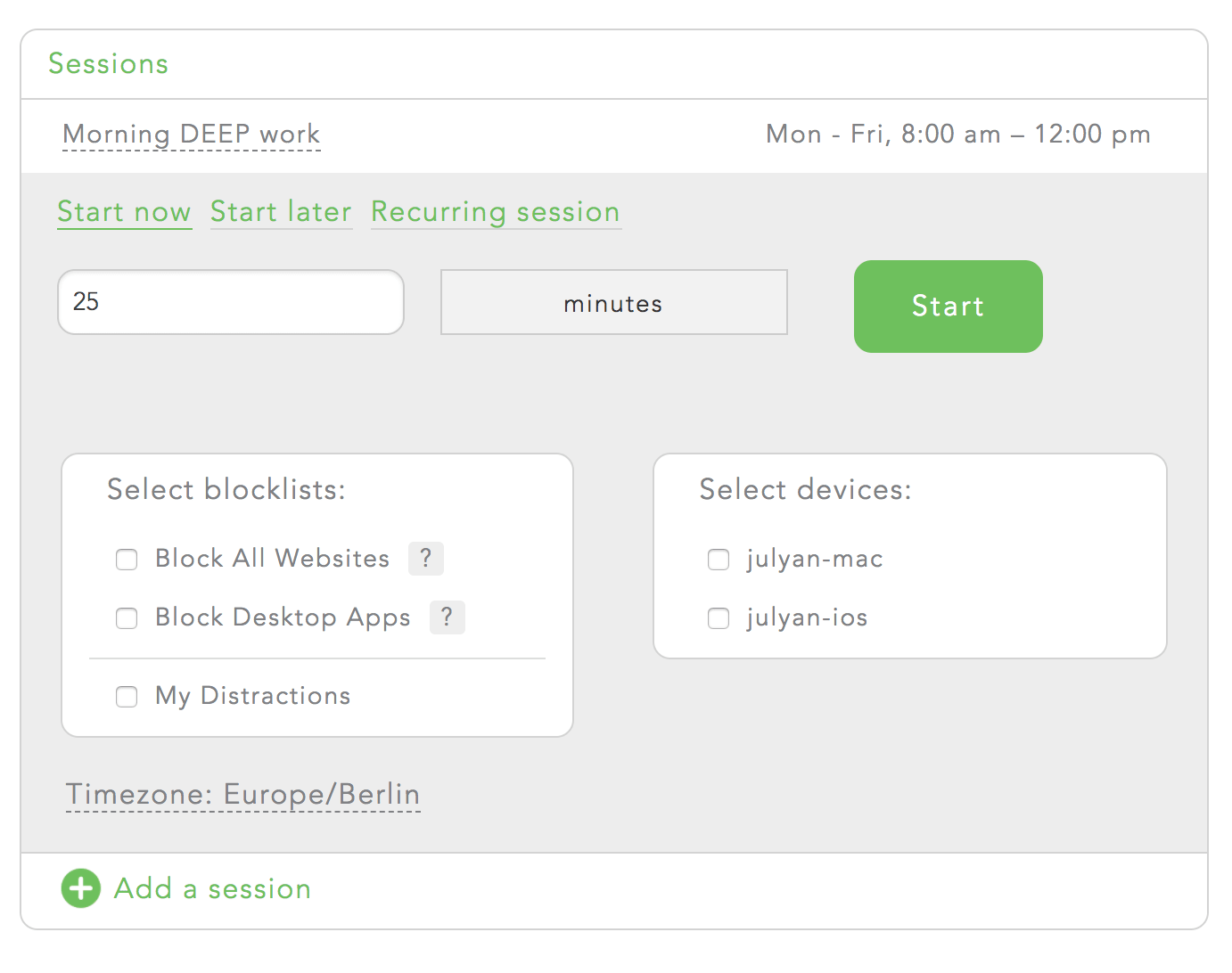
It also has a phone app as well so you can really go cold turkey.
Success: 9 / 10
This has really had a big impact on my life. If I don’t spend the morning distracted then I tend to not spend the afternoon distracted either. If I get stuff done in the morning then I can enjoy my afternoons. Go climb. Go meet people.
5. Messaging Time
As well as having a deep work ritual I am trying to have one time a day when I check and reply to emails and messages. Then I won’t be constantly checking and replying to messages all day long. And I can take my time in my replies.
Success: 4 / 10
Finding this kind of difficult to achieve because I’m always using messages to organise things. So I try to plan meeting up with someone to work on a project. Then end up spending half an hour messaging other people. Must be a better way to get around this but I haven’t figured it out yet.
6. Eradicate All Notifications
The first thing to do to tackle technology addictions is to eradicate all notifications. These notifications are basically companies saying: “Come back and spend time with meee!”. If you have notifications on then you’re basically letting these companies, who’s primary motive is to keep you distracted so they can make a profit, determine how you spend your time.
Here’s a guide to turning off notifications on ios and android.
Success: 10 / 10
Ditching notifications is vital for not being constantly distracted.
7. Number of Visits + Countdown Popups
There’s an awesome app called BrowseWithIntent! It cleverly pushes you towards better technology habits.
One use of it is to show you a popup of how many times you’ve visited a site.
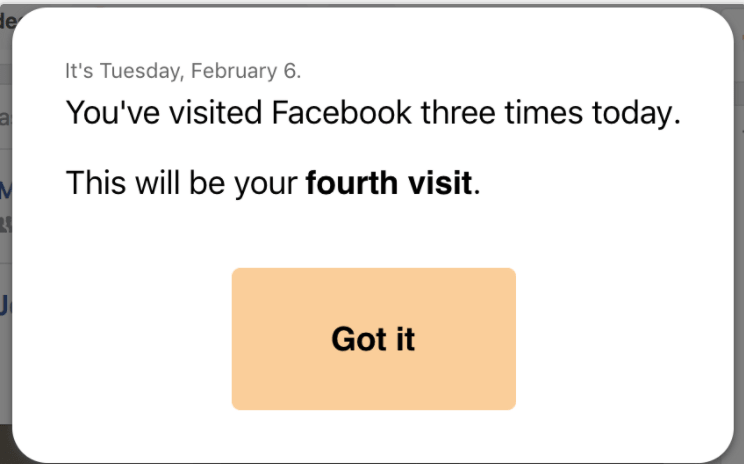
So you can be like “Oh shit, I’ve already been on FB 37 times today”. What am I doing with my life. This is a cool idea but in the end I just end up ignoring it.
An even better feature of Browse with Intent is a countdown popup. When the brain checks facebook it’s looking for a quick dopamine hit. You can frustrate that hit by making the brain wait 10 seconds before getting what it wants. This will be intensely frustrating but often I see the countdown time, realise I’m not going to get what I want, then go back to what I was actually w orking on.
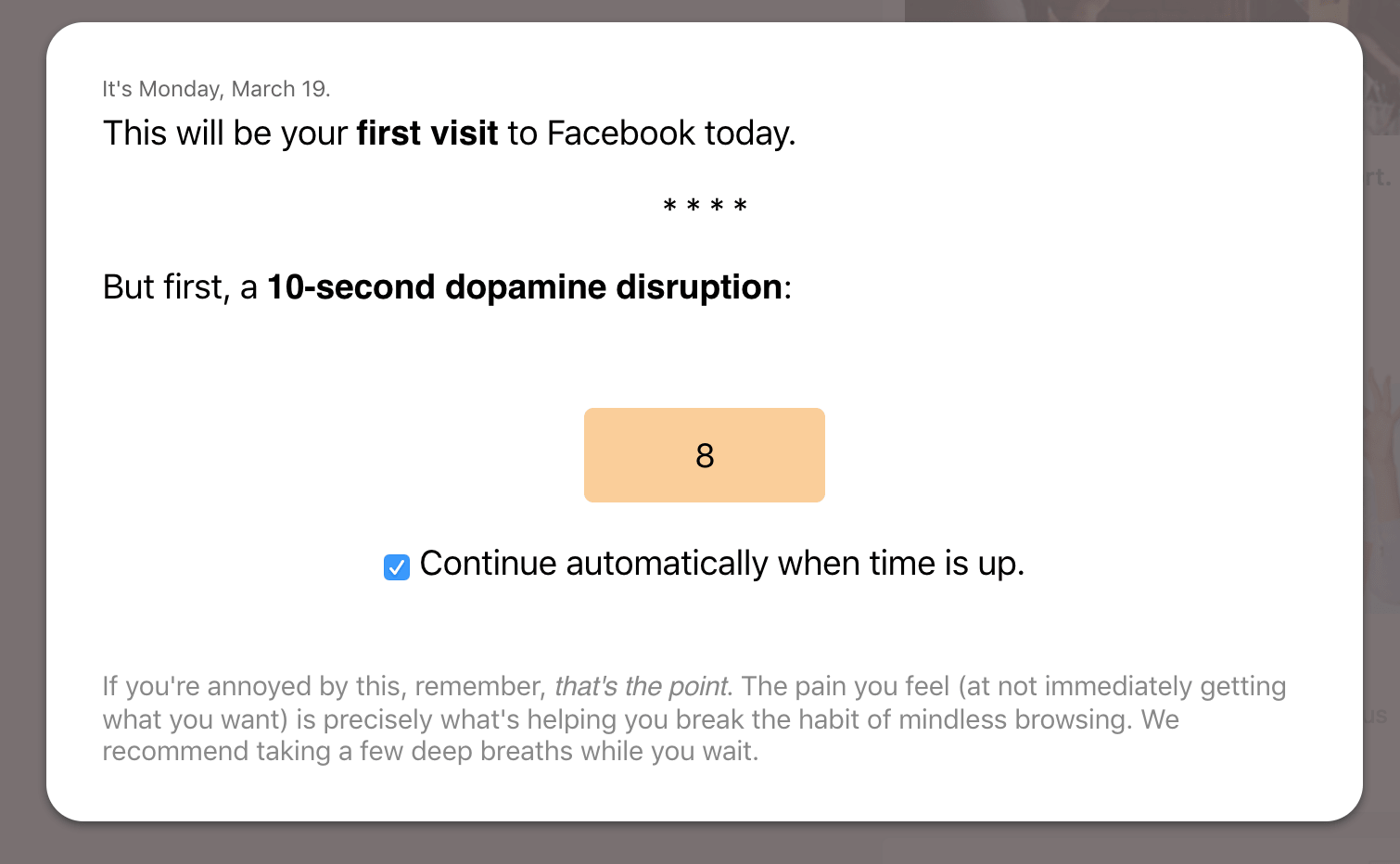
Success: 7/10
8. Technology Flow Chart
I had an idea to make a flow chart or checklist to decide whether I was allowed to use technology.

Success: 4/10
This was useful to think about when technology was actually adding value to my life. But because technology addiction is a habit most of the time you end up using technology without any conscious process. So the flow chart doesn’t actually help.
The Craftsman Approach to Technology.
In general all of these approaches encapsulate the “Craftsman Approach”. This idea, that I discovered in Cal Newport’s book Deep Work, is that instead of accepting all technology as positive, we should deliberately choose technology as a “tool to achieve a job”. A carpenter might have a particular saw for a particular job. Likewise, we should use facebook for a particular job. i.e. as a tool for managing just our events. Or just our messages. But we should work to keep it just for that job and not let it take over all aspects of our lives.
